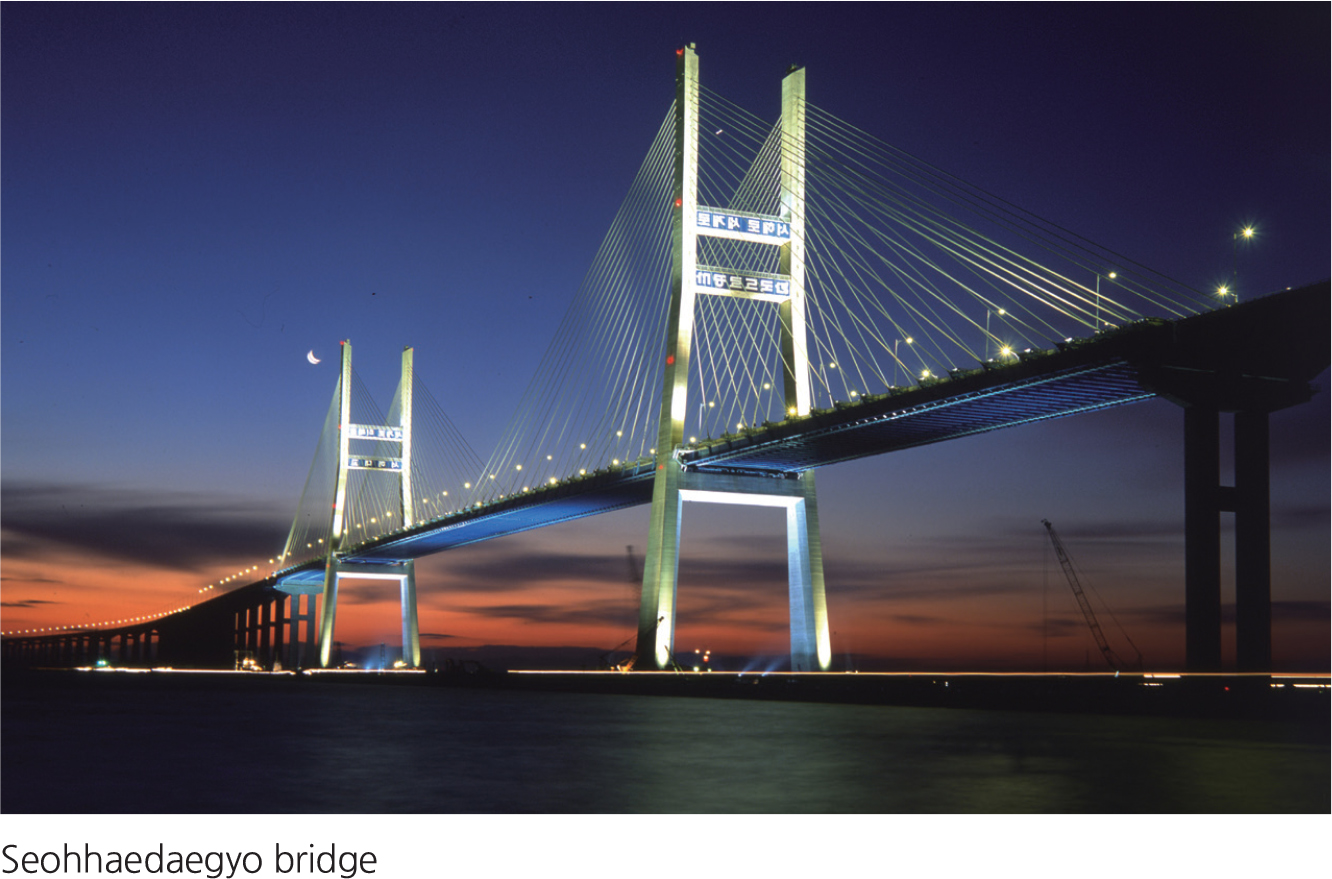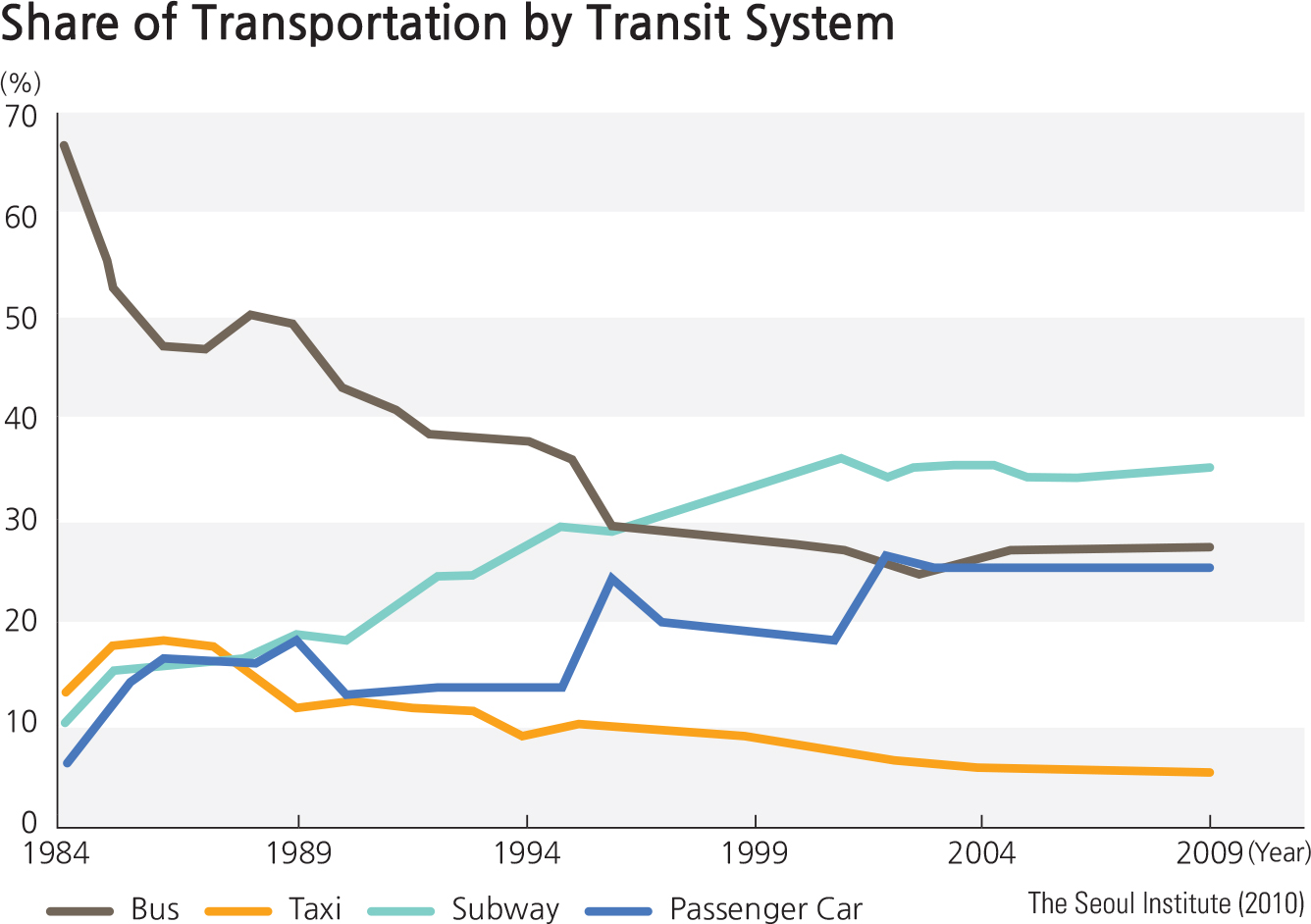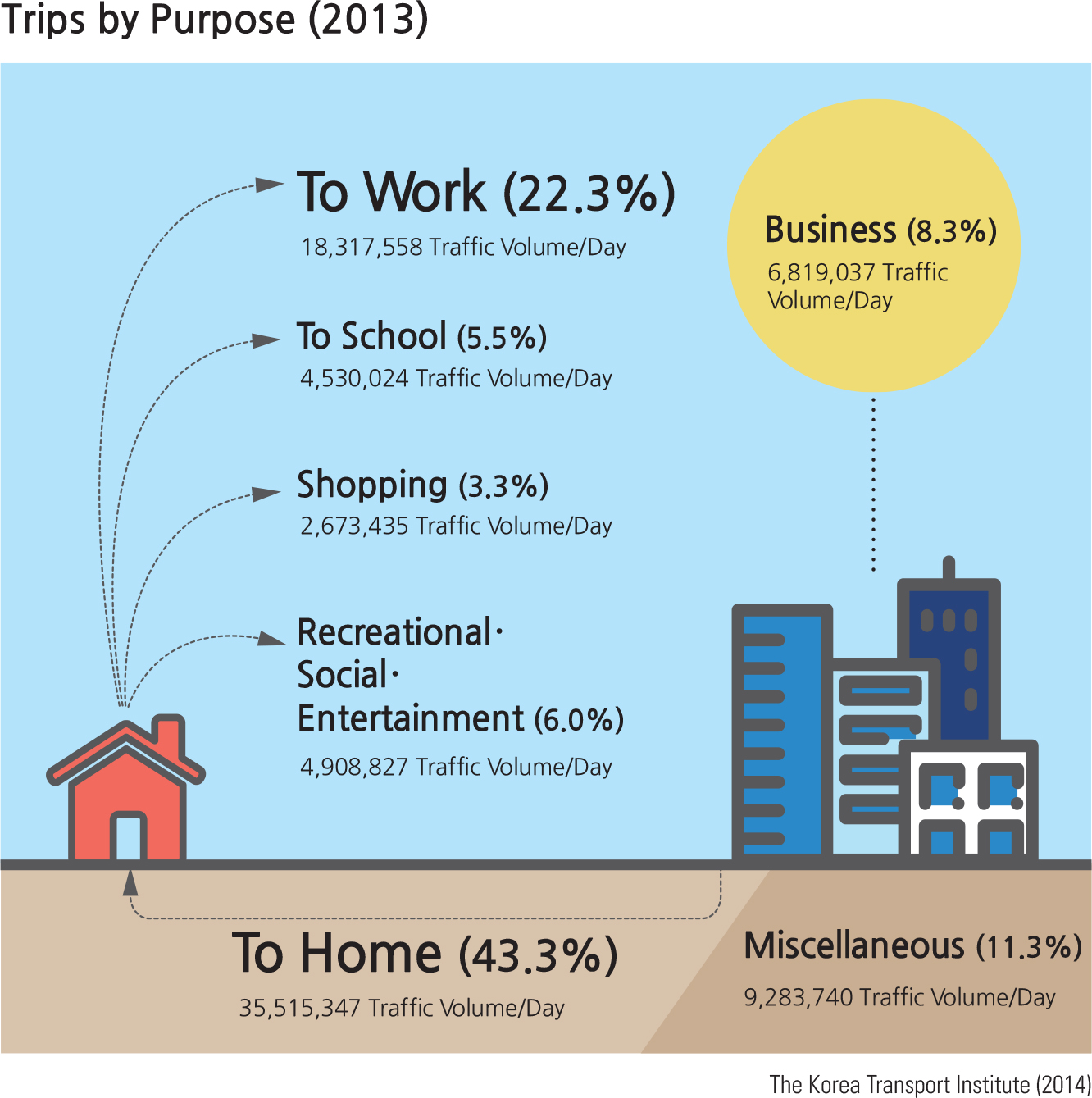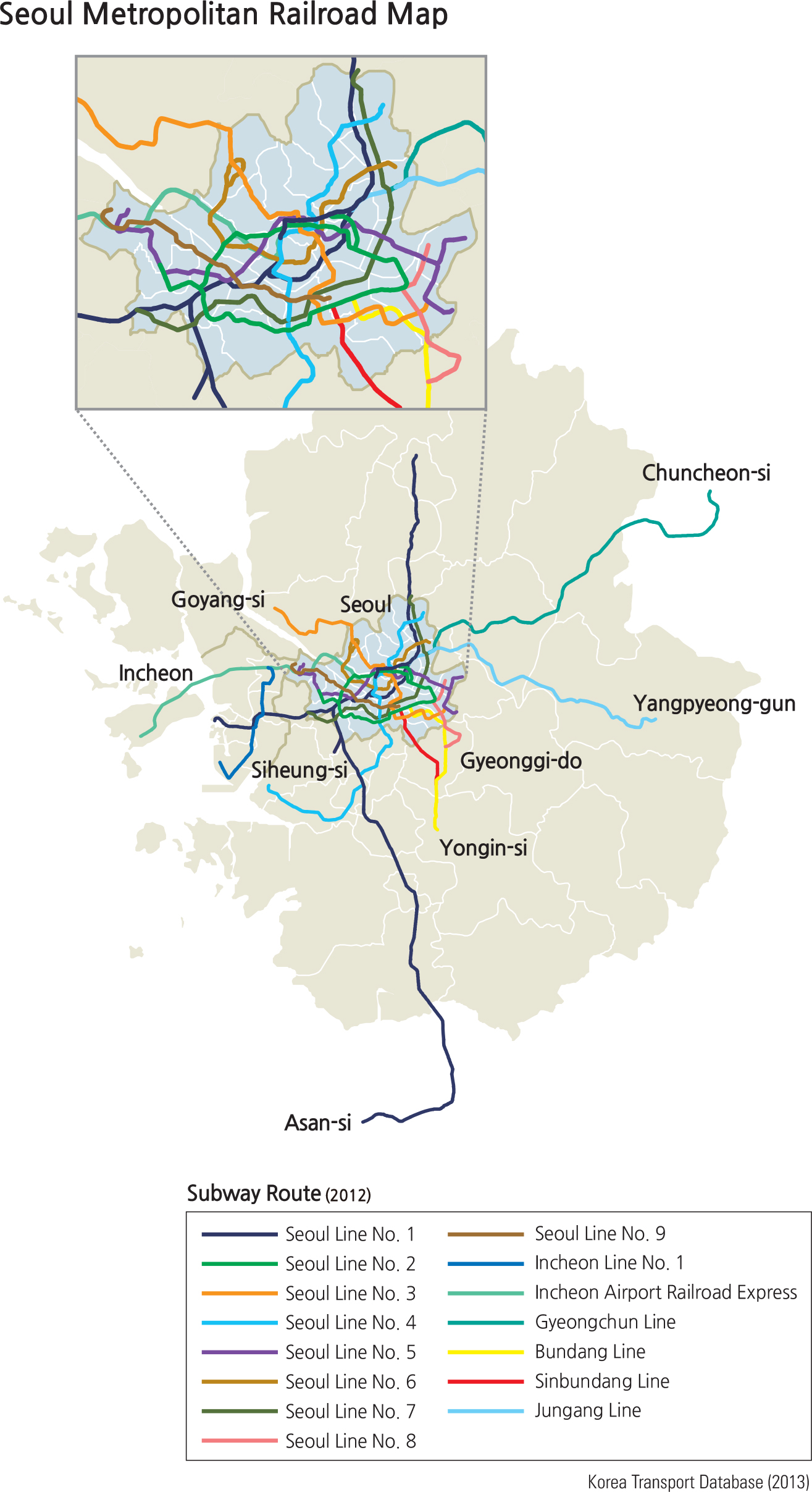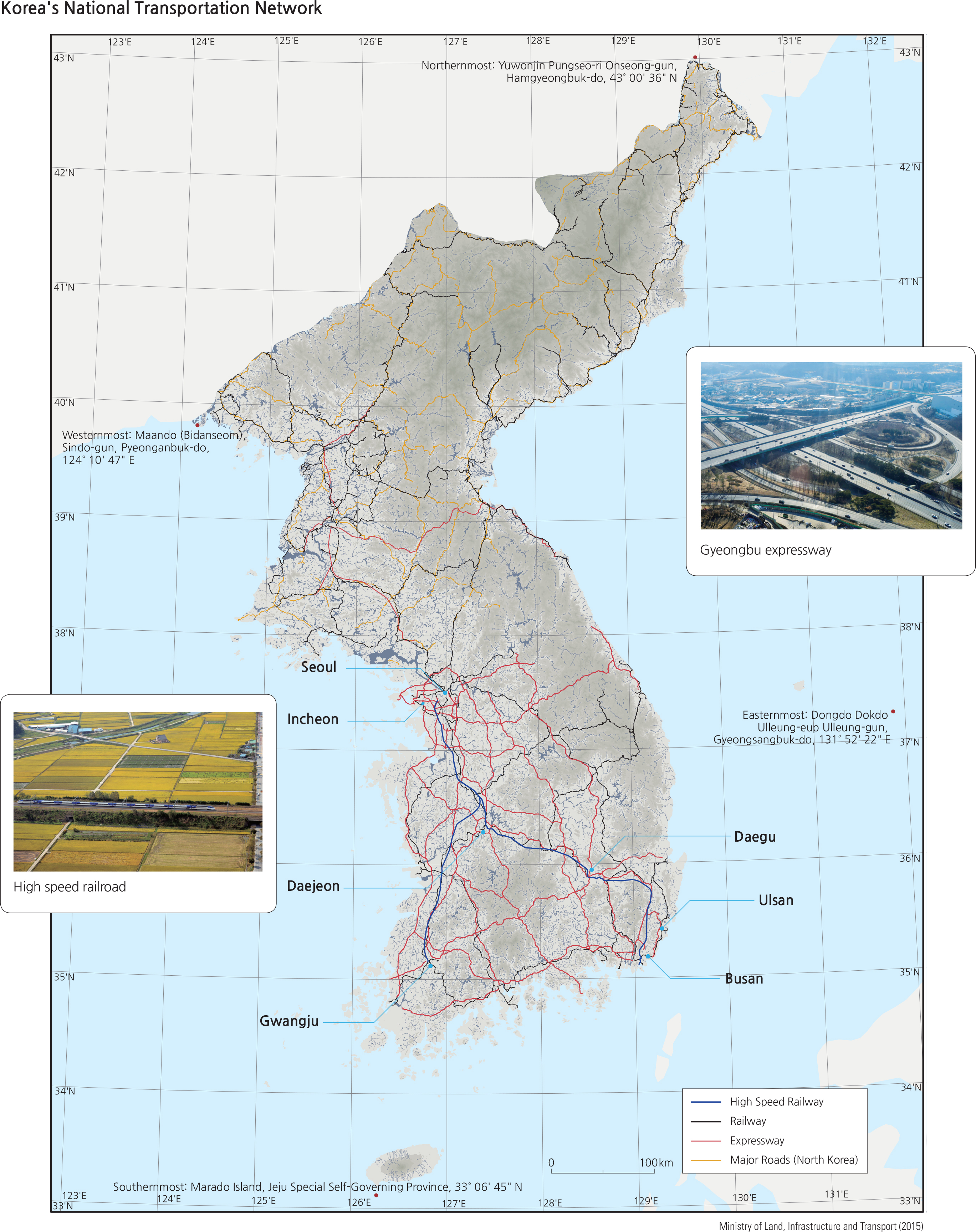for Children
Rivers and mountains once hampered travel from place to place within Korea. The development of an efficient transportation network, with highways, airports, and high-speed railways has made it possible for travelers to move from point-to-point anywhere within Korea within a half-day. Korea’ entry into modern transportation actually began with railways and airfields that the Japanese built to invade Korea and seize its resources during the colonial period. In 1955, diesel engine locomotives and a subway system were introduced while double-track railway projects were also promoted. The modernization of rail traffic has been ongoing, and in 2004 the Seoul-Busan High Speed Railway began operation. Korea’ air transportation has opened a new chapter with the opening of the ultra-modern Incheon International Airport on Yeongjong Island in 2001.
As economic development gained momentum, transportation infrastructures were rapidly built to support the transformation. Numerous important industries were developed, and in order to service those industries a main transportation network was established to connect Seoul with Busan. The most notable project was the 428 km Gyeongbu Expressway, opened in 1970.
|
